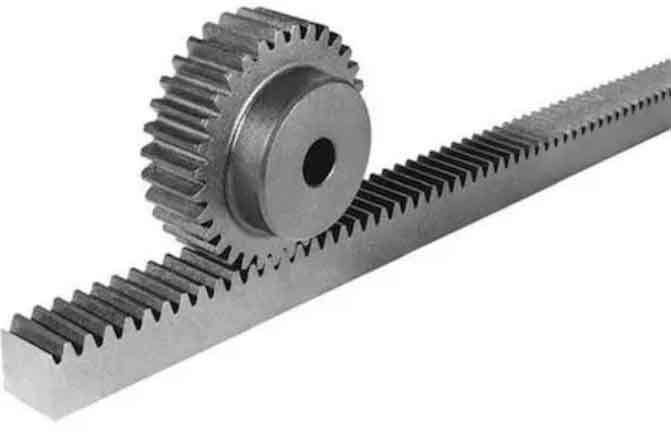
Rack and pinion steering is a key component in automotive systems that enables precise and responsive steering control in vehicles. It is a type of steering mechanism that converts the rotational motion of the steering wheel into linear motion to control the direction of the vehicle. Rack and pinion steering systems offer several advantages over other steering systems, such as recirculating ball steering, including improved steering feel, reduced complexity, and compact design. Let’s dive into the basics of rack and pinion steering:
Components of Rack and Pinion Steering:
- Steering Wheel: The steering wheel is the input device that the driver uses to control the direction of the vehicle. When the driver turns the steering wheel, it rotates the pinion gear.
- Pinion Gear: The pinion gear is a small gear attached to the steering shaft. When the driver turns the steering wheel, the pinion gear rotates, converting the rotational motion of the steering wheel into linear motion.
- Rack: The rack is a long, straight toothed bar that meshes with the pinion gear. As the pinion gear rotates, it causes the rack to move linearly.
- Tie Rods: The tie rods are connected to the ends of the rack. They transfer the linear motion of the rack to the steering knuckles, which turn the wheels.
- Steering Knuckles: The steering knuckles are connected to the tie rods and control the movement of the wheels. When the rack moves, it causes the tie rods to push or pull the steering knuckles, which turn the wheels accordingly.
Operation of Rack and Pinion Steering: When the driver turns the steering wheel, the pinion gear rotates. The rotation of the pinion gear converts the circular motion into linear motion along the rack. As the rack moves, it pushes or pulls the tie rods, which then rotate the steering knuckles. The rotation of the steering knuckles causes the wheels to turn in the desired direction, steering the vehicle.
Advantages of Rack and Pinion Steering:
- Responsiveness: Rack and pinion steering systems provide a direct and responsive connection between the driver’s input and the vehicle’s steering. This results in quick and precise steering response, enhancing the driver’s control over the vehicle.
- Improved Steering Feel: Rack and pinion steering offers improved steering feel, allowing the driver to have a better sense of the road and the vehicle’s handling characteristics. The direct mechanical linkage between the steering wheel and the wheels provides more feedback to the driver.
- Compact Design: Rack and pinion steering systems have a compact design, requiring less space in the vehicle’s engine compartment compared to other steering systems. This compactness allows for more flexible vehicle packaging and better weight distribution.
- Reduced Complexity: Rack and pinion steering systems have fewer components compared to recirculating ball steering systems, resulting in reduced complexity and potential points of failure. This simplification contributes to improved reliability and easier maintenance.
- Weight Savings: Rack and pinion steering systems are typically lighter than other steering systems, contributing to overall weight savings in the vehicle. This weight reduction helps improve fuel efficiency and handling characteristics.
Rack and pinion steering systems have become the standard choice in modern vehicles due to their advantages in responsiveness, steering feel, compactness, and reduced complexity. They provide drivers with precise control and a more connected driving experience, making them an integral part of automotive systems.
